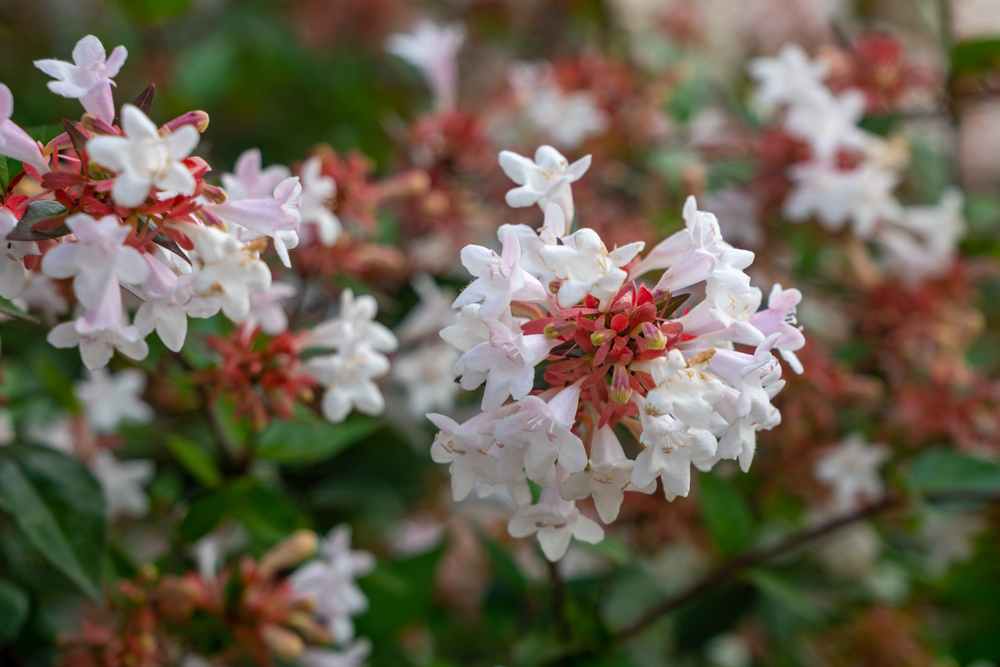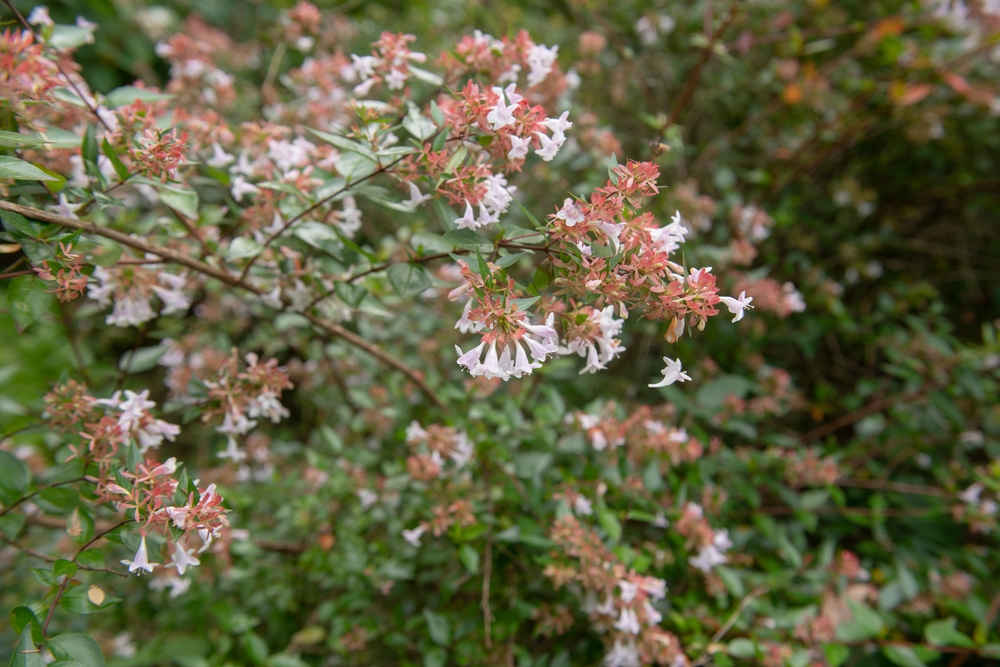Is your garden in need of a little TLC? If you’re looking for a plant that’s easy to care for and provides year-round interest, look no further than the Canyon Creek Abelia. This hardy shrub is perfect for both novice and experienced gardeners alike.
It’s a tough plant that’s tolerant of poor soil and drought, making it an ideal choice for low-maintenance gardens.
Suppose you’re looking for a plant that adds color and interest to your landscape. In that case, the Canyon Creek Abelia is an excellent choice.

| Botanical Name | Abelia Grandiflora’ Canyon Creek’ |
| Common Name | Canyon Creek Abelia |
| Plant Type | Perennial |
| Flower Color | Pink, Yellow, or White |
| Size When Mature | 36 inches |
| Bloom Time | Late Spring to Early Summer |
| Sun Requirements | Full to Partial sun |
| USDA Hardiness Zones | 6 – 9 |
| Soil PH Range | 4.5-9.0 |
| Soil Type | Acidic, Neutral, Alkaline, Well-draining |
| Water Needs | Low-Medium |
| Native Area | Mexico |
What You Need to Know About Canyon Creek Abelia
While many plants are known for their colorful blooms, the Canyon Creek abelia adds visual interest with its stunning foliage.
The leaves of this shrub are large and glossy, with a deep green hue that enhances any garden. In fall, the leaves turn a beautiful shade of orange and red, providing a vivid pop of color against the barren landscape.
This plant is a fast grower, reaching up to 60 inches in height. It is also relatively low maintenance, requiring only occasional pruning to remove spent blooms.
The flowers of the plant are a sight to behold. They’re beautiful that come in colors pink, yellow, or white. The blooms appear in late spring and continue into early summer.
If you’re looking for a plant that attracts bees and butterflies, the Canyon Creek Abelia is an excellent choice. The flowers are highly fragrant and act as a natural magnet for these pollinators.
This shrub is also deer resistant, making it a good choice for gardens in areas where deer are a problem.
The plant is easy to care for and tolerates drought and poor soil conditions.
How to Care for Canyon Creek Abelia
Here’s everything you need to know about growing and caring for a thriving Canyon Creek Abelia:
Light
The Canyon Creek Abelia is a beautiful flowering shrub that thrives in sunny or shady areas. Its small, white blooms add a touch of elegance to any garden, and its glossy green leaves provide year-round interest. Though it is relatively low-maintenance, the Canyon Creek Abelia does require some care to ensure that it remains healthy and vigorous.
One of the best ways to care for this plant is to give it light daily. Whether you place it in a sunny spot near a window or in a shady area of your yard, the Canyon Creek Abelia will provide a splash of color to any space. To truly show the beautiful color of the plant, give it at least six hours of sunlight each day.
Water and Soil Needs
The plant is a hardy one that does not require a lot of water. However, during the hotter months of the year, it is vital to ensure that the soil around this plant stays moist. One way to do this is to water the plant deeply once a week. This will help ensure the plant always has enough water without being waterlogged.
Soil is a vital component of any garden, and its quality can have a big impact on the health of your plants. If you’re looking to grow a particular plant species, it’s important to make sure that your soil meets that plant’s specific needs.
This plant grows best in well-drained, sandy loam soils with a neutral pH. If your soil does not meet these requirements, you can amend it by mixing in organic matter such as compost or peat moss. Having a soil pH between 4.5-9 is perfect.
Temperature Requirements
The plant is heat-loving that thrives in sunny, warm environments. It is an evergreen shrub that is hardy in USDA zones 6-9 and thrives in temperatures between -10°F – 30°F. Any lower than that, the plant may start to experience damage.
Fertilizer
The best fertilizer to use on the plant is a granular fertilizer. Like all plants, this plant needs the right fertilizer to thrive. The best time to apply fertilizer is in early spring, just as the plant is starting to grow. For an extra boost, you can also apply a second round of fertilizer in mid-summer.
When choosing a fertilizer, look for one high in nitrogen and low in phosphorus. This will help to encourage green, leafy growth.
Common Diseases
All plants are susceptible to diseases, and this plant is no exception. Two of the most common diseases that affect this species are powdery mildew and leaf spot.
Powdery mildew is a white or gray fungus that can cover the leaves and stems of the plant. Leaf spot is another fungal disease that affects the plant. This disease is characterized by small, dark spots on the leaves.
Both of these diseases can be controlled with the use of fungicide sprays or dusts.
Canyon Creek Abelia Propagation
This plant can be propagated by rooting stem cuttings in late spring or early summer.
To propagate with cuttings, look for healthy stems about 6 inches long and free of pests or disease. Using a sharp knife, make a clean cut below a leaf node. After that, simply cut off or remove the lower leaves of the stem. You may let it sit for a few hours to let the cutting callous over before planting, or dip it in rooting hormone to promote growth.
Next, fill a planting pot with moistened mix and insert the cutting. Firm the mixture around the stem, then water well. To help keep the cutting moist, place a clear plastic bag over the pot and secure it with a rubber band. Put the pot in a bright spot out of direct sunlight and wait for new growth to appear, which could take several weeks.
Once roots have formed and new growth appears, remove the plastic bag and continue to water as needed. The plant can be transplanted to a permanent location when it is sufficiently rooted. There are many other types of abelia such as the abelia Edward Goucher that are also very easy to propagate and care for.

